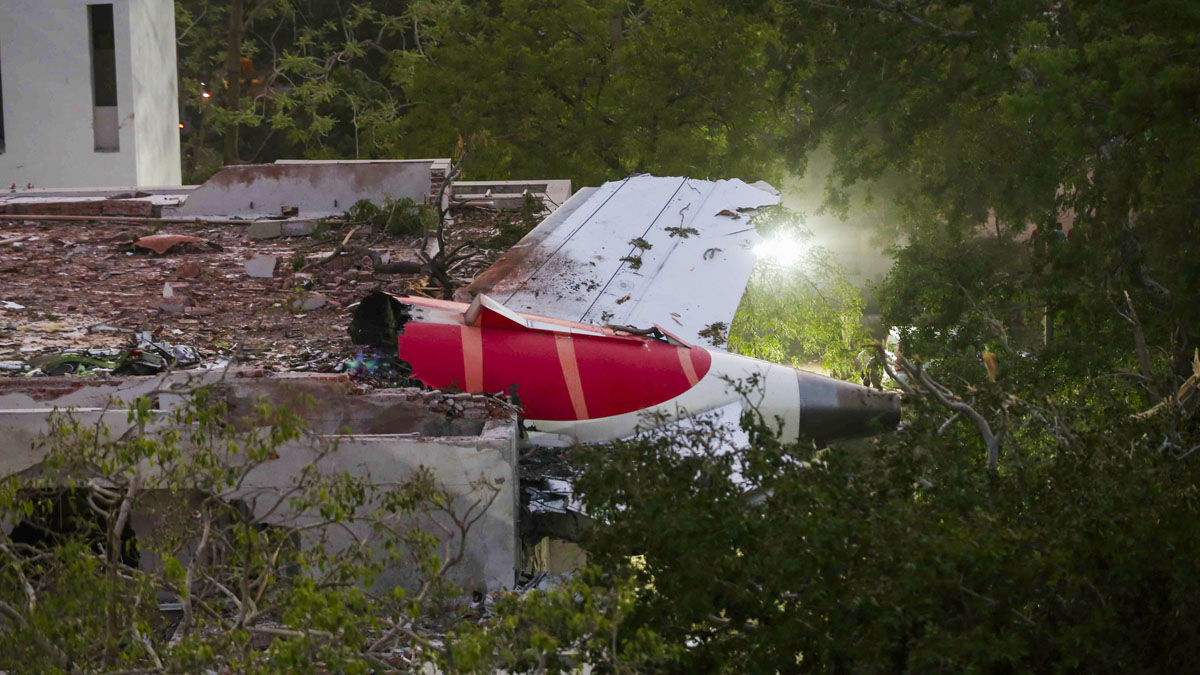Ahmedabad Air India crash: Deliberate crash, software malfunction, human error... fresh theories afloat after AAIB report
 **EDS: FILE IMAGE** Ahmedabad: In this Thursday, June 12, 2025 file photo, wreckage of the Air India plane that crashed moments after taking off from the Ahmedabad airport, lies on a building, in Ahmedabad. Both switches feeding fuel to the two engines of Air India flight 171 were cut off followed by pilot confusion before the plane crashed in Ahmedabad, seconds after taking off, the first investigation report into the crash has revealed. (PTI Photo) (PTI07_12_2025_000001B)
**EDS: FILE IMAGE** Ahmedabad: In this Thursday, June 12, 2025 file photo, wreckage of the Air India plane that crashed moments after taking off from the Ahmedabad airport, lies on a building, in Ahmedabad. Both switches feeding fuel to the two engines of Air India flight 171 were cut off followed by pilot confusion before the plane crashed in Ahmedabad, seconds after taking off, the first investigation report into the crash has revealed. (PTI Photo) (PTI07_12_2025_000001B)
The Aircraft Accident Investigation Bureau (AAIB) released its preliminary report on the tragic crash of AI171 Ahmedabad-London flight on June 12, which has set off "fresh possibilities" about the possible cause of the crash.
The probe agency released a 15-page preliminary report on Saturday, a month after the fatal crash, which claimed the lives of 260 people. The Boeing Dreamliner aircraft operated by Air India crashed soon after it took off from the Ahmedabad International Airport on June 12.
The preliminary report suggested that cutting off fuel to both engines of the Boeing 787-8 aircraft during take-off could have caused the crash. According to the report, the aircraft started moving out from its bay for take-off at 1.26pm and it took off about 12 minutes later.
However, the aircraft started losing speed soon after take-off, after the fuel cuttoff switches for both engines transitioned from RUN to CUT-OFF position, with a time gap of just one second. A cockpit voice recording showed one of the pilots asked the other, “Why did you cut-off?
The other one replies, “I did not do so!”
Though the switches were moved to run position again, the aircraft did not recover the required speed, resulting in the crash.
Captain Sumeet Sabharwal, the 56-year-old veteran with 30 years of experience at Air India, had commanded the flight on the day of the incident. According to the report, he had logged 15,638 flying hours, including 8,596 on the Boeing 787. Co-pilot Clive Kunder had 3,403 hours of total experience, with 1,128 on the Dreamliner. Kunder was the pilot flying the AI 171, while Sabharwal was the pilot monitoring, PTI reported.
While investigators are yet to report the cause of the crash conclusively, fresh theories have emerged blaming the pilots for the tragic incident. Notably, AAIB has not recommended any action against Air India, aircraft manufacturer Boeing and engine manufacturer GE at this stage of the investigation. Some suggest this could be a move to cover up the real cause of the crash.
Captain Mohan Ranganathan, an aviation safety expert, told NDTV that the crash could "result of deliberate human action". "It cannot be done automatically (turning on fuel cutoff switches) or due to a power failure because the fuel selectors are not the sliding type. They are designed to stay in a slot, and you have to pull them out to move them up or down. So, the possibility of inadvertently moving them to the "off" position doesn't arise. It's definitely a case of deliberate manual selection to move it to 'off'," Ranganathan told NDTV.
Another senior pilot quoted by the Indian Express raised the possibility of a software malfunction. "Apart from looking into the action of pilots, the investigators should look if the fuel switch cut-off could be due to any other electrical or system-related issues. Could it be an electrical or software malfunction that signalled to the aircraft system that the switches were in cut-off mode, even if they had not been actually moved?” the pilot told the publication.
A senior pilot told THE WEEK that the report missed out on an important element from Boeing’s ‘memory items’, the critical list of actions that pilots are trained to perform from their memory when specific emergency situations develop, instead of going through their check-list or flight manual. The item to do when there is an engine stall or problem with fuel is to quickly turn the fuel switch off and on — or to use the right terminology, turn it to CUT OFF and then turn it to RUN. And repeat the action to reignite combustion in the engine.
However, pilots' association, ALPA-I, rejected the suggestions of pilot error and demanded a fair probe. The organisation also urged the investigators to include them as observers in the probe.
India